100 Years of UBaltOur Timeline
"We can only look to the future to disclose the almost certain growth of our alma mater and watch it take its place beside the great universities of the world."
excerpt from the 1929 Reporter, the University's yearbook
1925-1950: An academic idea is born

1925
A New Vision for a New University
Seeing the changing landscape in the academic playing field, nine men come together one night in June to discuss an idea that would become The University of Baltimore. The idea was to build a private evening professional school for law and business students. The team of Maynard A. Clemens, P. Lewis Kaye, William H. Wilhelm, R. Loran Langsdale, Victor R. Jones, Howell A. King, Alton R. Hodgkins, Stewart Lewis and Clarence W. Miles charter their vision on Aug. 8.
1925
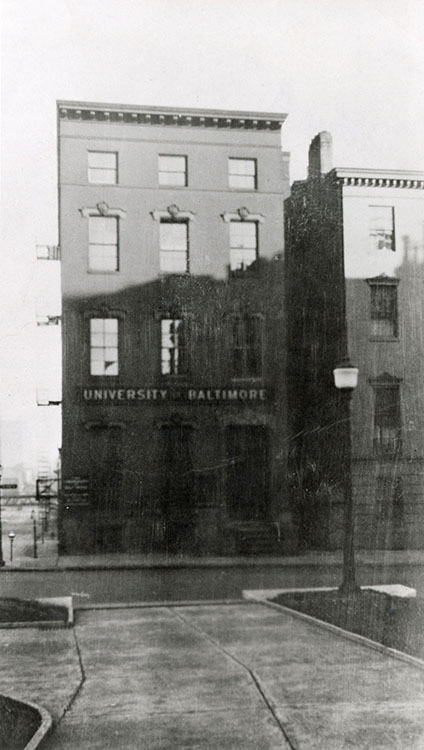
Class is in Session
On Oct. 1, the University holds its first classes, with 62 students enrolled in the School of Law and 114 in the School of Business Administration. Eight professors teach seven law courses including contracts, domestic relations, criminal law, torts, elementary law and property. Fifteen professors teach 12 courses that ranged from traditional business such as economics and accounting, to broader subjects including journalism and modern languages.
1926
A Solid Foundation
The University outgrows its first building, located at 625 Saint Paul St., and buys an annex on the same block for the freshman law class. Both buildings were demolished in the 1960s for a development project that never came to fruition.
1927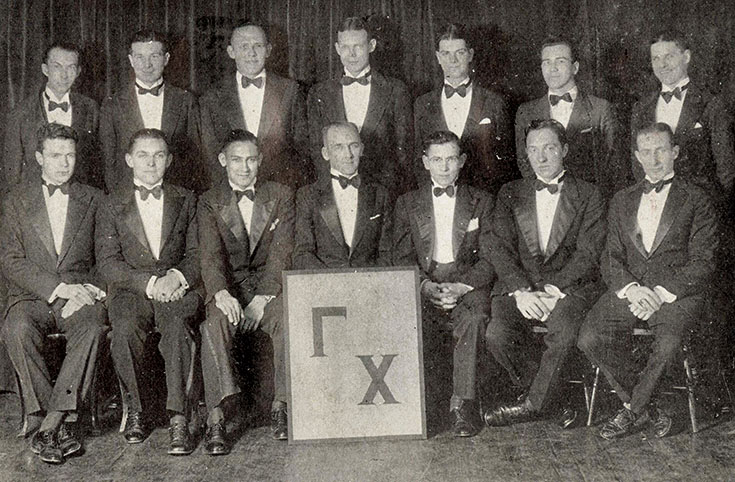
Greek Life comes to Baltimore
Phi Delta Tau is organized, becoming one of the first fraternities, though not for long, at the University. Membership is a mix of law and accounting students from University of Baltimore, Johns Hopkins, Eastern University and Baltimore College of Commerce. In 12 years, when Phi Delta has grown to 200 members, it is joined by five more fraternities: an Alpha Iota chapter of Sigma Delta Kappa, Phi Beta Gamma, Chi Delta, and a Lambda chapter of Iota Tau Tau, a sorority for women in the legal profession.
In 1934, the University adds the Beta Alpha Honorary Society for business and journalism students that have earned at least 88 percent over the course of three years of study and haven't had to re-exam in any subject.
1928
Pomp and Circumstance
Three years in, the University holds its first commencement. On June 9, 38 students received Bachelor of Law degrees at the Peabody Conservatory of Music. Baltimore Mayor William F. Broening gives the keynote. He would return the following year to give another address he titled, "The Municipal Significance of the University of Baltimore."
1928
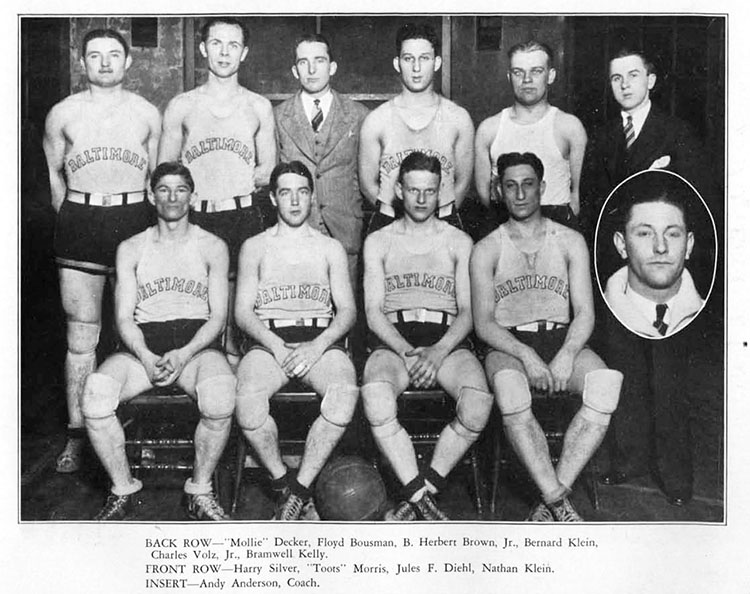
Athletics Tips Off
The University establishes an athletics program. Basketball comes first, with a schedule that included games against NYU and Johns Hopkins. Tennis follows with matches across the state. The year also sees the addition of a fencing club. Lacrosse and football were on the wish list for future seasons.
1929
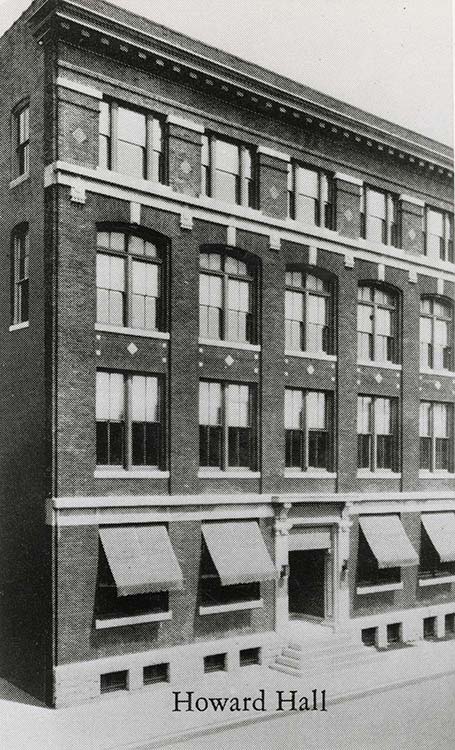
Outgrowing our First Footprint
The University needs a new location to expand and purchases Howard Hall, located at 840 N. Howard St., the former home to the Baltimore School of Dentistry. The building still exists today as home to the Eubie Blake Cultural Center.
1933
Proudly Non-Traditional
Anna W. Carton becomes the first mother in the law college's history to graduate. She brought her son, Allen, 6, to the ceremony. Three years later, she would become co-founder of the first women's law partnership in Baltimore. Her yearbook biography read as follows: "This gifted young woman successfully combines the roles of wife, mother and student. … Not a few of the members of the class of 1933 would have abandoned the study of law had it not been for her encouragement and her willingness to act as coach."
1934
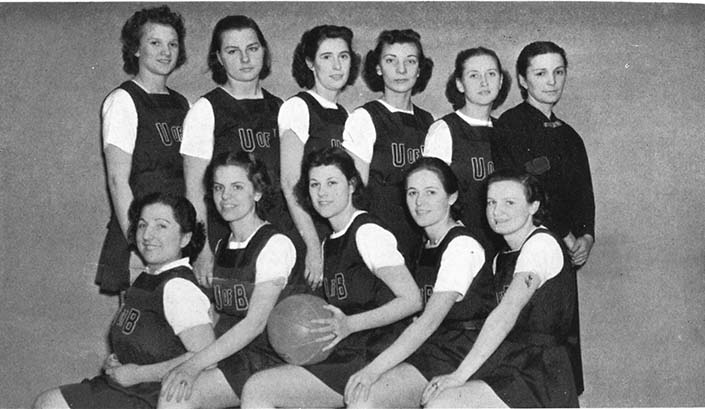
Earning Their Crown
Girls Basketball starts as the first athletics program for women students, starting with 12 members. Four years later, the team, now dubbed the Queen Bees, would beat every state opponent. With the city's support, the Queen Bees traveled to Kansas for the National Amateur Union Basketball Championship Tournament. They won their first game in the tournament but were eliminated in the second. Women at UBalt also competed in various intramural sports including ping pong and badminton.
1937
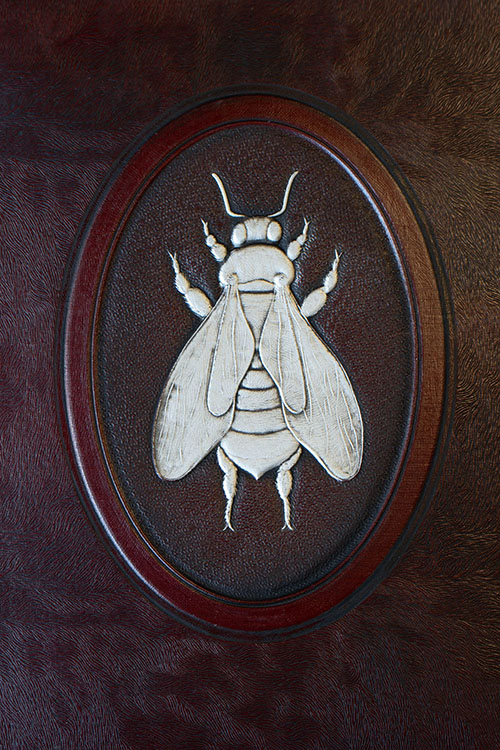
A Mascot is Born
The University starts recognizing a bee as its mascot during sporting events and other social activities. The cover of the Reporter yearbook in 1938 featured an early version of the bee. In the 1940s, the Bee found a home in the form of a campus activities update known as "The Beehive." The Bee made various appearances over the years, but it wasn't until the summer of 1971 when it got a defined and refined look, thanks to then-athletic director and coach Frank Szymanski, M.S. '77.
1939
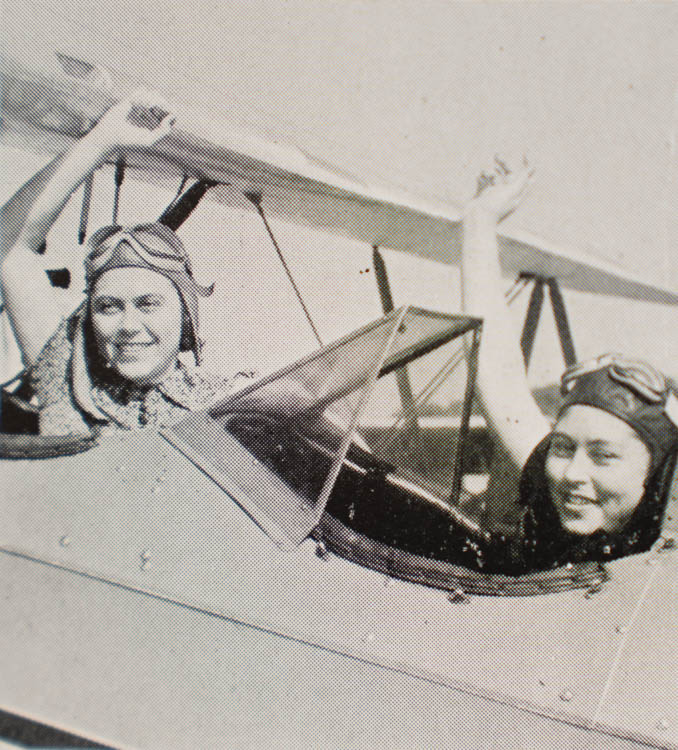
Dedicated to Service
In October, the University becomes one of more than 1,000 colleges and universities to join 1,400 flight schools in participating in the Civil Aeronautics Authority's Student Pilot Training Program. This followed then-President Franklin D. Roosevelt signing the Civilian Pilot Training Act of 1939 into law. According to a September 1939 article in The New York Times, "The program [had] two objectives, creation of a reserve of basically qualified airmen on which the armed forces might draw in case of war, and stimulation of private flying as a means of promoting commerce and contributing to the growth of aviation."
In 1944, the junior college graduates its first class in the aircraft engineering curriculum and creates courses for student nurses—all changes to serve the war effort.
1942
Honoring Those in Service
In the first yearbook since the U.S. entered World War II, following the attacks on Pearl Harbor in December 1941, the student editors include a dedication to those called to service. It read, in part:
"We are engulfed in the most devastating war the world has ever witnessed. American history has taught us to face the future resolutely and with courageous fortitude. … Through circumstances beyond our control, students all over the country have been compelled either to cut short or to forego entirely their college education. Several of our classmates have already responded to their country's call. To these loyal American students who have taken up the battle, and to those who are privileged to graduate this June, this Yearbook is respectfully dedicated."
The yearbook also pays tribute to "the first known alumnus to make the supreme sacrifice in World War II," Lt. Irvin B. Hillman, Class of '41, Army Air Corps.
1945
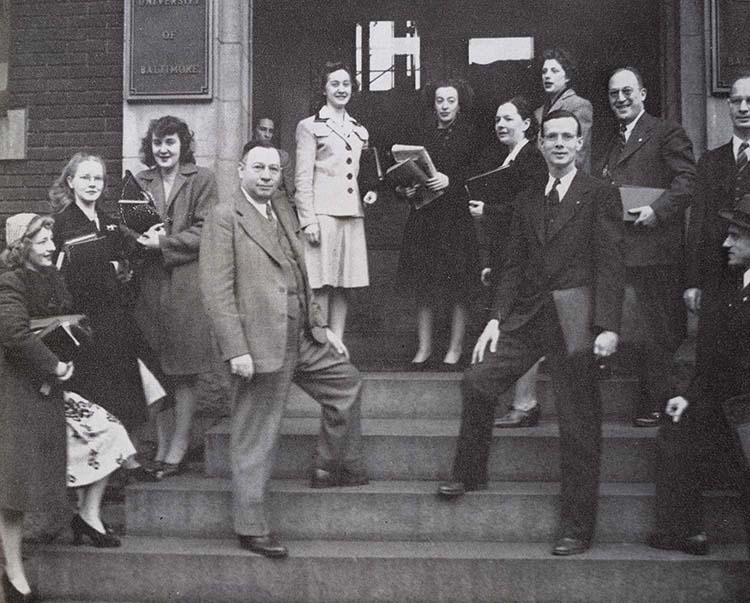
A President's Acknowledgment
With just 18 students, the Class of 1945 becomes the smallest in the University's short history because of lasting impacts of the world war, which would continue for another several months following the spring commencement. In a letter to the graduates, University President Theodore H. Wilson writes, "Future classes will look to you with gratitude as the class which carried on despite the world 's most devastating war. Your classmates who now serve in the Armed Forces challenge you who now graduate to live as citizens of the world and upholders of democracy. Your Alma Mater trusts you to meet that challenge."
1947
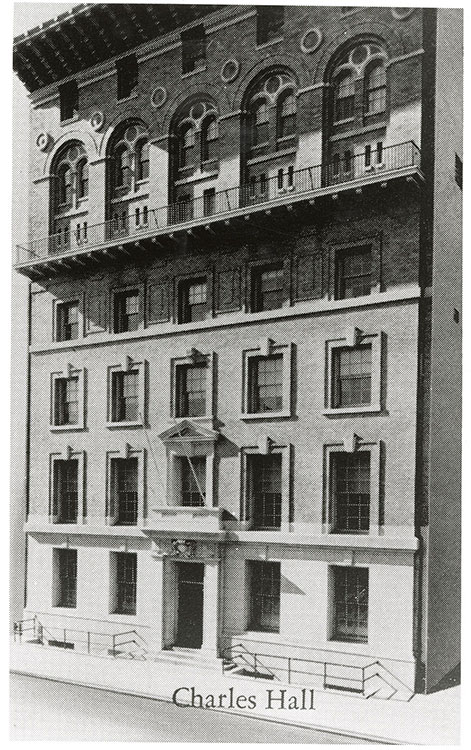
Post-War Growth
In April, the University of Baltimore purchases a building that was once the Baltimore Athletic Club, located at 1420 N. Charles St., and calls its new home Charles Hall. This new space would support the University's growing population with additional space for recreation, classes and offices during the post-war period. Additional acquisitions and construction would expand this building over time to establish the Academic Center that the University still uses today.
1950
A Silver Anniversary
The University community celebrates its 25th year with nods to its growth and future. "It means that the University is a living thing, that it has a body and soul, and that it is still growing. It means that it has become an integral part of the daily functioning of the city of Baltimore and the neighboring communities."
1951-1975: Waves of change

1951
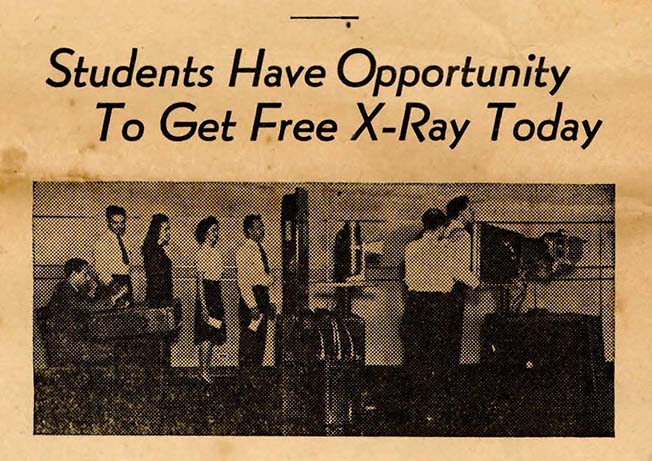
Medical Matters Arise
In the spring semester, all daytime students take a Red Cross First Aid Course as part of a nationwide program of civilian defense. The program is to ensure students across the country would know how to render first aid to themselves, their families or anyone who needed it. Courses met in the gym weekly for 14 weeks at no cost to the students; however, they had to provide their own bandages and supplies.
Also, that spring, free chest x-ray services were provided to students, staff, faculty and student family members over age 15 as a means of checking for tuberculosis cases.
1953
Air Force Comes to Midtown
The University signs an agreement with the Air Force to offer night courses in the School of Business, Industry and Management for Air Force Reserve specialists. Initial courses included Aircraft Maintenance and Aircraft Mechanics.
1955
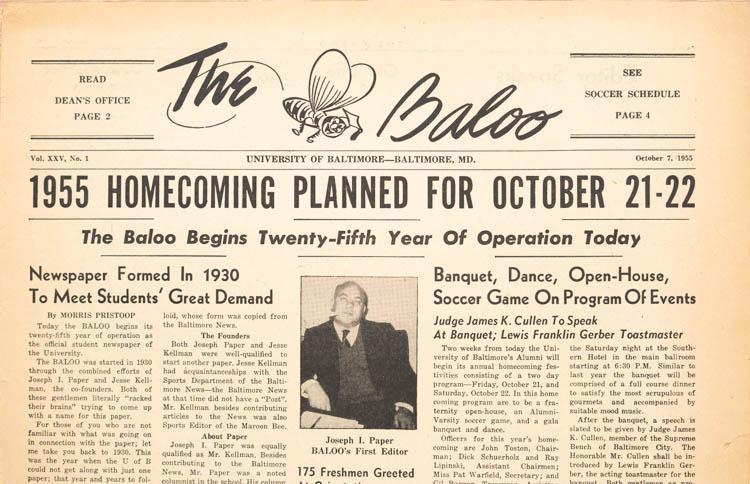
Baloo's Birthday
The Baloo, the University's student newspaper, celebrates its 25th birthday with a special cover story in its Oct. 7 issue. The Baloo was the fourth campus newspaper, starting in 1933, but it was the longest serving, having consistently printed through 1968. None of the seven student news publications that followed could break its print run record.
Then-news editor Morris Pristoop pens the story, nodding to the paper's co-founders, Joseph I. Paper and Jesse Kellman, for introducing a competitor to the existing Maroon Bee. They wanted something that could better present the student body. "Students could not wait until the paper came out on Fridays, "Pristoop wrote. "They stood in line at the Howard Street building and gladly paid 3 cents for a copy of the paper."
1957
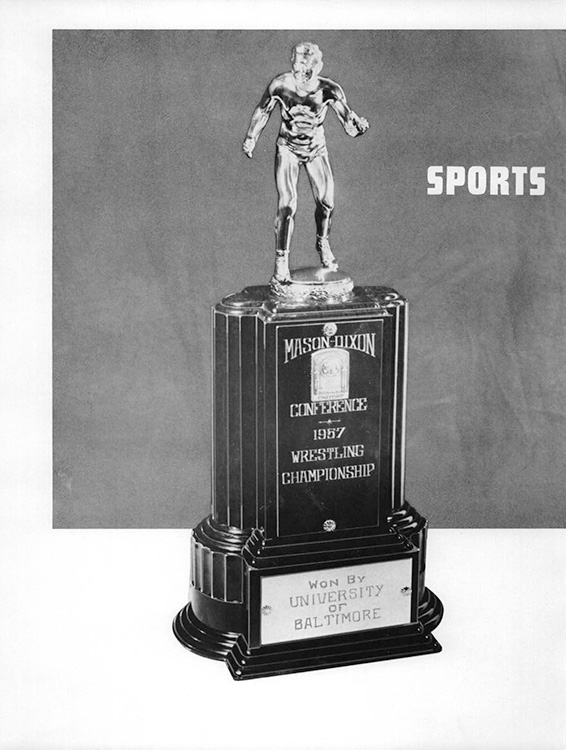
A Banner Year for Bees
The University's wrestling team beat Towson State Teacher's College to win the Mason-Dixon Wrestling Championship—its second in consecutive years. In the same season, the Bees basketball team goes to the playoffs as the lacrosse team prepared to defend their title with their largest turnout for tryouts—45 candidates for 30 spots.
1961
Welcoming the Arts
The University grows with the addition of the College of Liberal Arts. With it came four-year liberal arts programs in English, history and psychology. The seeds for this college were planted in 1937 when the University added a junior college that introduced general education opportunities, pre-law and secretarial science to the already-offered business and law programs. The name would later change to the Yale Gordon College of Liberal Arts in 1982, a nod to a law and business graduate.
1961
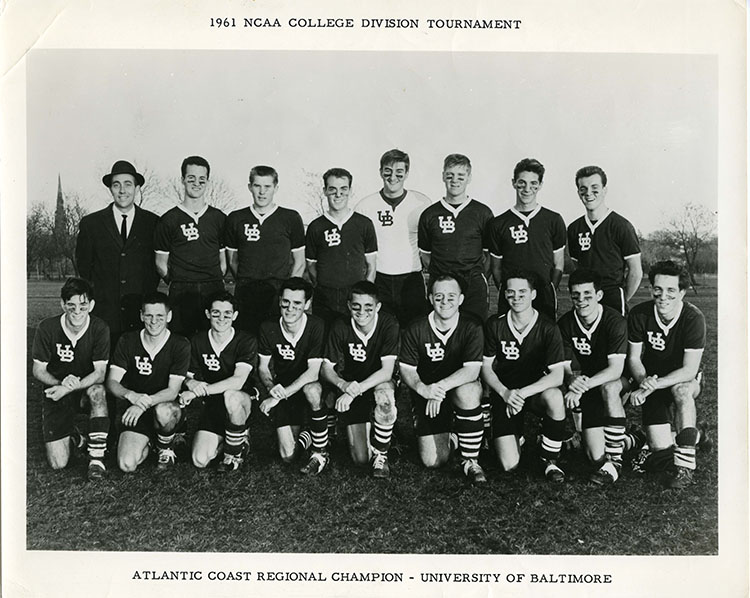
Home of the Champions
Our soccer team wins its first NCAA championship. The team would go on to win two more, 1963 and 1975. Many University teams would elevate to conference-level play over the years, fueling the desire to establish an Athletic Hall of Fame. The first of eight annual ceremonies took place in May 2004 and honored 20 athletes and two coaches.
1964
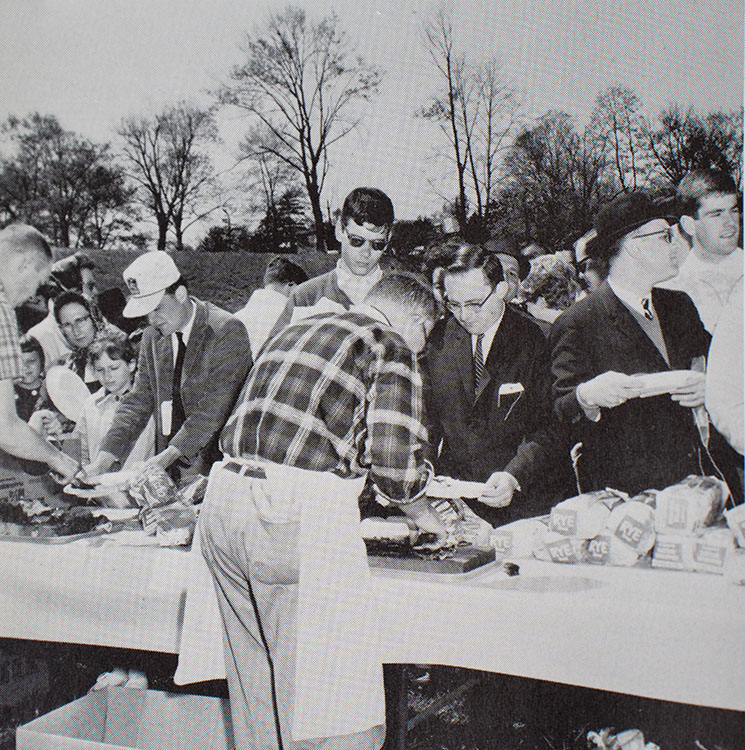
Building Student Life
As the campus grows, so does student life. In May, the campus hosts a bull roast where $2.50 bought guests all-you-can-eat-and-drink beef and beer.
1965
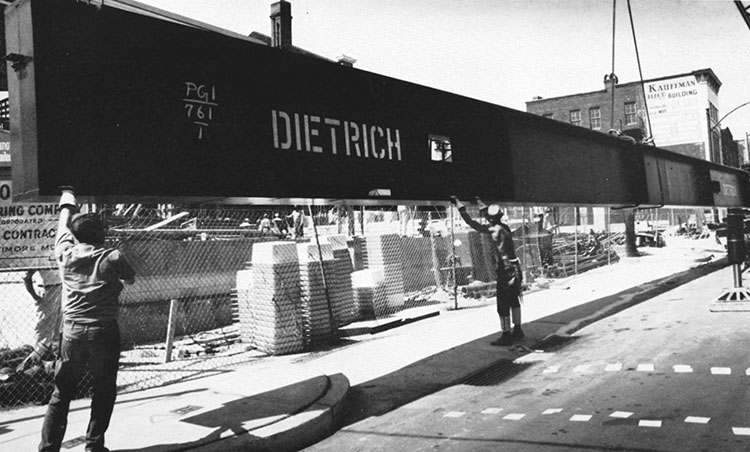
Larger by Volumes
On April 7, workers break ground for the brand new Langsdale Library, a $1.5 million project with the capacity to house 125,000 volumes. It would open one year later at the southwest corner of Oliver Street and Maryland Avenue.
1965
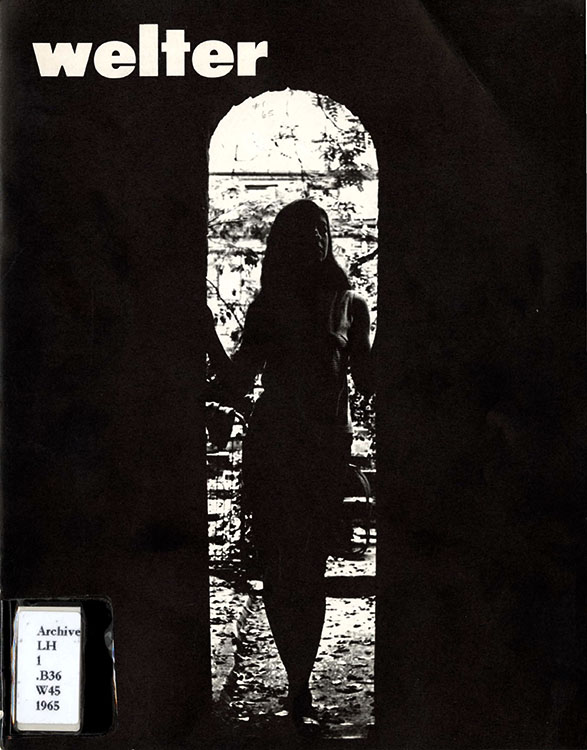
Writing New Chapters
Students and faculty create Welter, a publication for creative works of fiction, poetry, memoir, essays and visual art, gathered from writers and artists everywhere. Each edition, students oversee the entire publication.
The University later created Skelter, an annual literary journal written and edited exclusively by the University of Baltimore community.
1966
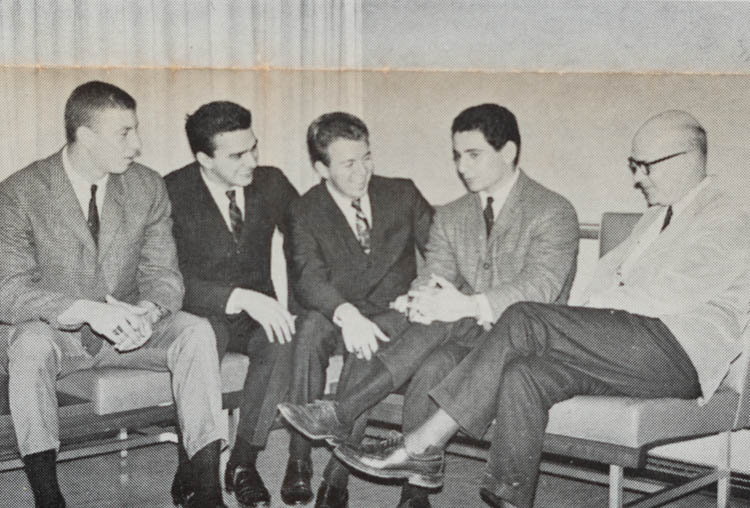
The First Convocation
The University suspends classes so everyone could attend the school's first convocation. Robert Moses, president of the 1964-65 World's Fair and former New York City Park Commissioner, served as speaker. The convocation is held at the adjacent Lyric.
1969
A New Foundation
The University of Baltimore Foundation is created to provide financial support and ensure the success of the University of Baltimore and all those it serves.
1969
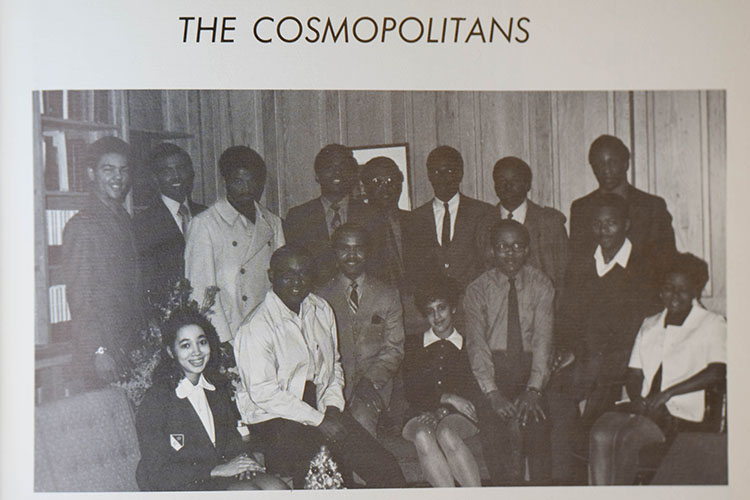
Cultural Representation
In March, students form a Black Student Union with the intention of promoting Black culture on campus, instituting Black history courses, and organizing around the Black experience on campus. Karl Wyatt was one of the founding organizers. Then in December, another group with a similar goal forms. The Cosmopolitans wanted to stimulate cultural Black awareness, alleviate racial tension, improve the University's image in the Black community and stimulate social activity among all students.
1969
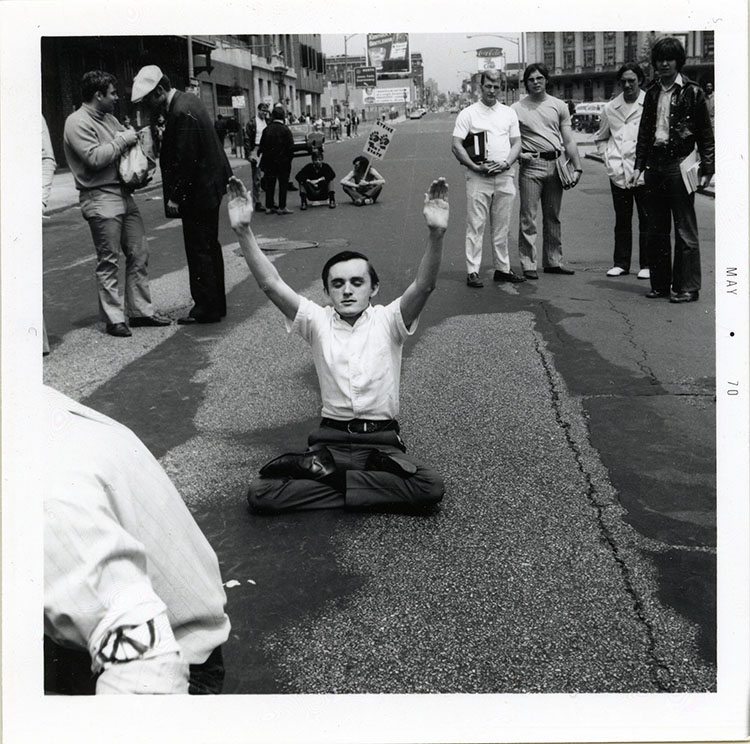
Raising their Voice
Students use their right to protest to seek changes they hope to see at the University and around the world. Over the year, they block Charles Street to protest a lack of parking spaces near campus and increased rates on the spaces that were available. Reporters from the Student Press encourage their peers to "RAISE HELL!" and be informed, indicating the presence of counterculture on campus. And they host a teach-in titled "Vietnam Moratorium Urged by Students" took place in Langsdale Library.
Seven months later, in May 1970, students participated in the Moratorium to End the War in Vietnam, joining other protesters in a march to Charles Center for a citywide protest.
1970
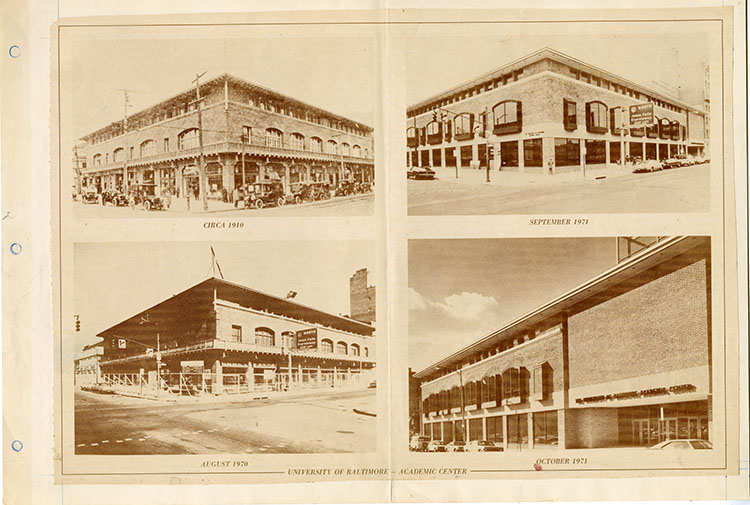
A Modern Campus
The University of Baltimore begins renovations on the Kelly Buick Building, located at the corner of North Charles Street and Mt. Royal Avenue, to create the school's Academic Center. This renovation maintained the building's original external characteristics, while altering and modernizing the inside of what would become the Academic Center.
As president, Dr. Thomas G. Pullen describes the plan for this building upon its acquisition in 1968, stating "The Kelly Building is an architectural landmark of Baltimore, and it is planned to maintain the exterior character while modernizing the interior." H. Mebane Turner described the Academic Center as "a major step in creating a complete urban campus for the University of Baltimore." The building's construction was completed in 1971.
1972
Welcoming Waters
Director John Waters premieres his newest film Pink Flamingos at the University, which welcomed him without hesitation. It was one of three Waters films that would have their world premieres on campus. Female Trouble premiered in 1974 and Desperate Living followed in 1977. A once-student and student author at UBalt, Waters had only fond memories when he returned on May 24, 2023 to receive an honorary Doctor of Humane Letters.
1973
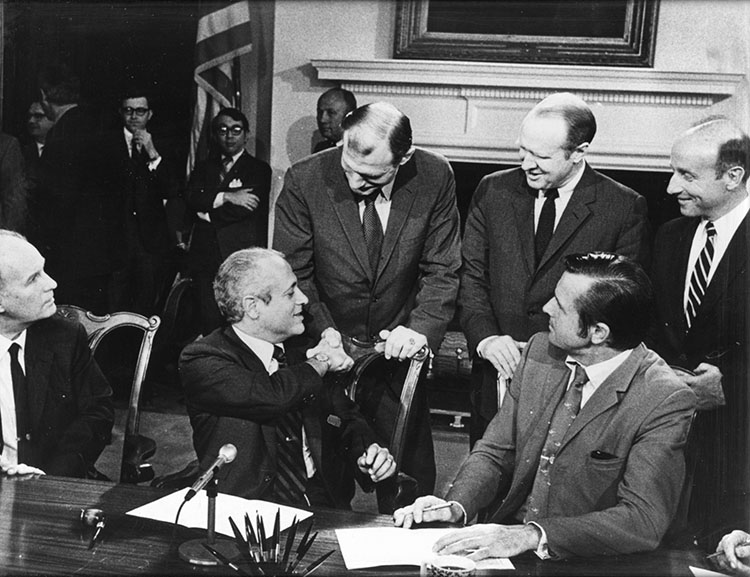
Going Public
On May 24, then Maryland Gov. Marvin Mandel signs a bill into law that allows the University to enter the state system and become a public institution.
The law wouldn't take effect until Jan. 1, 1975, but was the beginning of major academic changes at the University. In 1974, the first graduate programs were made available to students.
1975
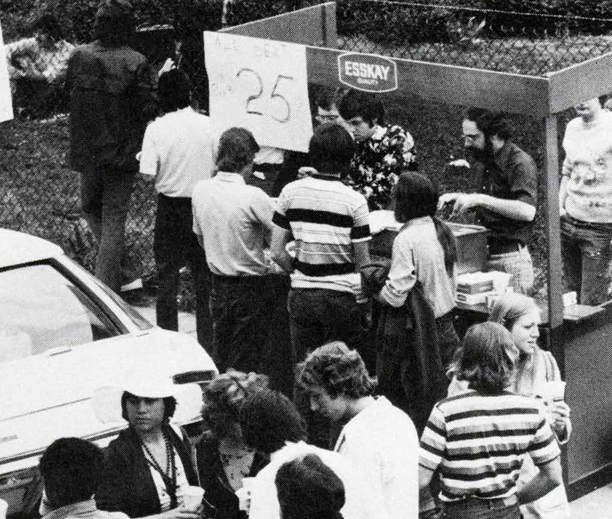
Rocking the Block
Our Bees know how to party and launch a tradition that would stick with Block Party, established in the University's 50th year. Food, drinks, games and dancing would make memorable the spring tradition, held on the city block next to the Academic Center. It continues to be one of the University's favorite events, now called Rock the Block.
For our Centennial celebrations, Rock the Block will be even bigger this spring. Join us for the fun April 12. Learn more about our Centennial events.
1976-2000: Making its mark

1976
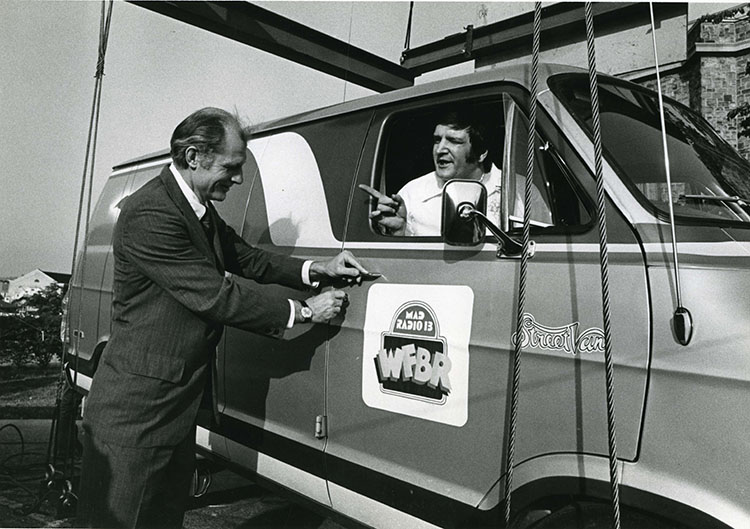
A Winning Idea
In partnership with WFBR, the University runs a unique event on April 30 involving locking DJ Mike March in a 1976 Dodge van. Guests could pay $1 for a chance to crack the code that would set March free. A city police sergeant figured it out, but the winners were UBalt students. Contributions received at the event, totaling $1,669.13, went into a scholarship fund.
1977
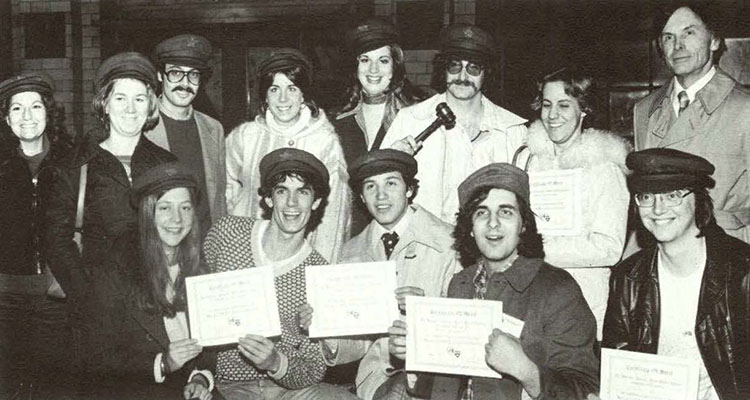
A Model Group
Our students take top honors for the second year in a row at the Harvard National Model United Nations Conference in Boston. Our University was voted an Outstanding Delegation Award and seven individual honors for its representation of The People's Republic of China. The University group was one of about 93 represented at the conference, and was among six recipients, including Harvard University, of the Outstanding Delegation Award. On their own time, our students conducted individual research with guidance from State Department representatives, our faculty, and other experts on The People's Republic of China in preparing for the competition during the break that preceded the 1977 spring semester.
1978
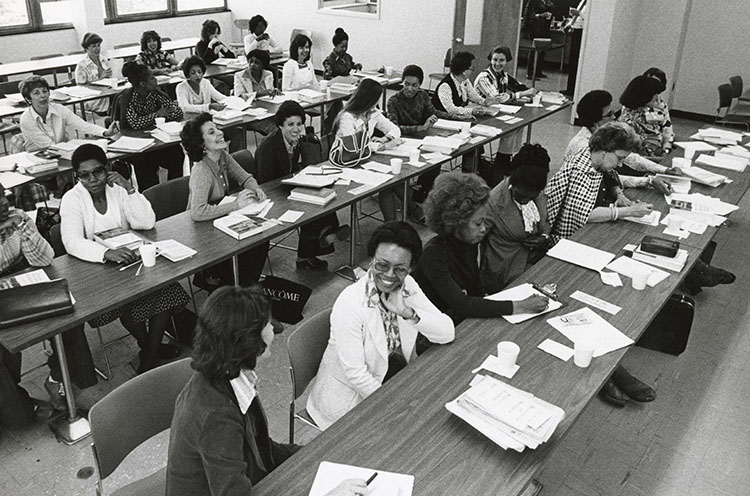
Lauding Future Women Leaders
Seventeen members of the first class of the University's Women's Program in Management receive the Certificate of Management during a fall ceremony. Dr. Betty Stirling, then provost, served as featured speaker, telling the graduates, "As women, we are still second. and we do have to try harder. But advanced education is one of the best ways to get ahead. So, while I give you my congratulations on what you have accomplished, may I also challenge you to keep going."
1982
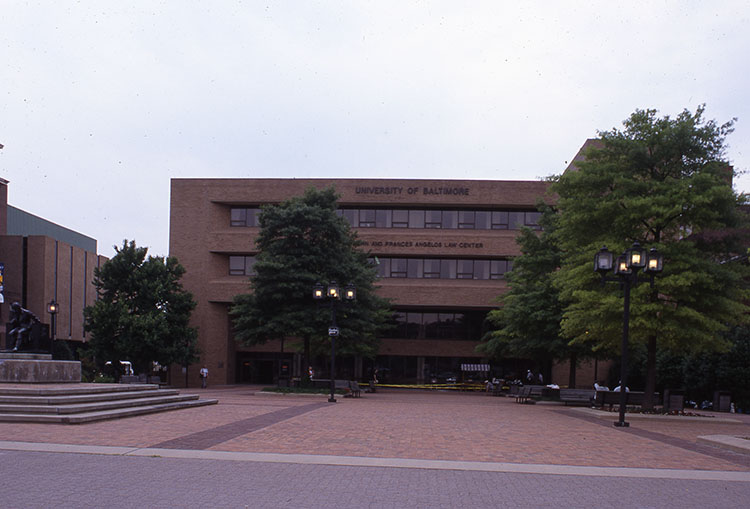
A Growing Campus
A law center opens at the northeast corner of Maryland and Mt. Royal avenues. Also, this year, giants from the University's history see their names attached to two colleges: Robert G. Merrick School of Business and the Yale Gordon College of Liberal Arts.
1983
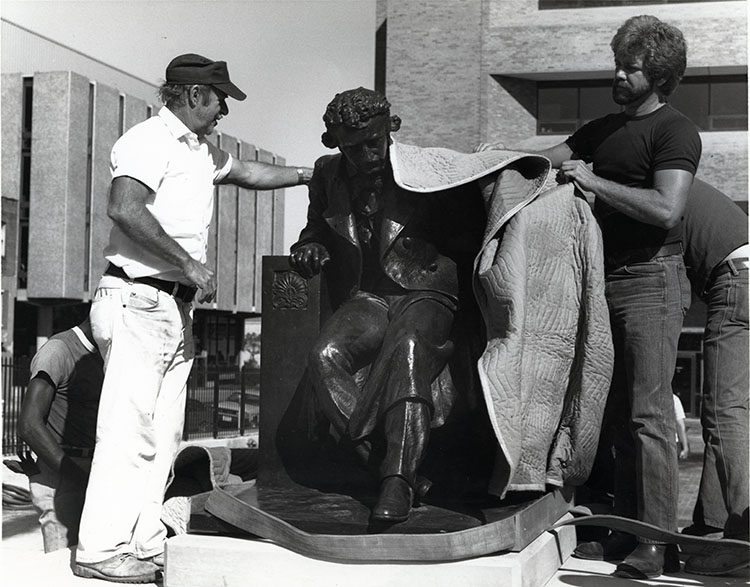
Poe's New Perch
The Edgar Allan Poe statue by Sir Moses Ezekiel is moved from Wyman Park to a new base built on the University's central plaza, which was located at the intersection of Mt. Royal Avenue and Maryland Avenue and dedicated as Gordon Plaza a year later. Poe has since become an unofficial but beloved member of the University community.
1985
Eight Million Feet of History
Thanks to a $55,000 grant from the National Historical Publication and Records Commission, the Langsdale Library, in conjunction with the Enoch Pratt Library, will be able to repair and restore 8 million feet of television news film from WMAR-TV. The goal is to transfer the film to video tapes that can be viewed for educational purposes. The collection covers 35 years of history (1948-1983) in the city and Chesapeake Bay region.
1985
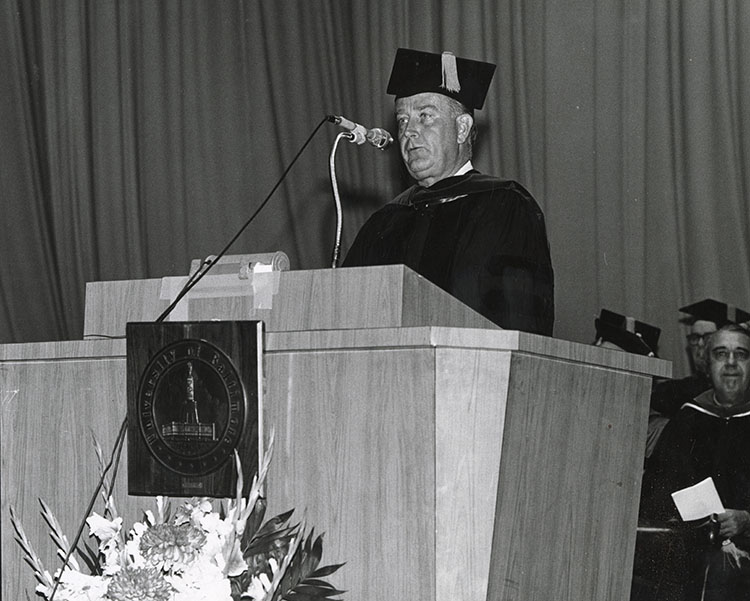
Ready to Serve
The Schaefer Center is established on April 16. Named in honor of then-Mayor William Donald Schaefer, a UBalt Law alumnus, this center works to honor its namesake's leadership and dedication to public service through research and technical services, leadership development programs and applied learning opportunities. Today, the center is housed within the College of Public Affairs.
1987
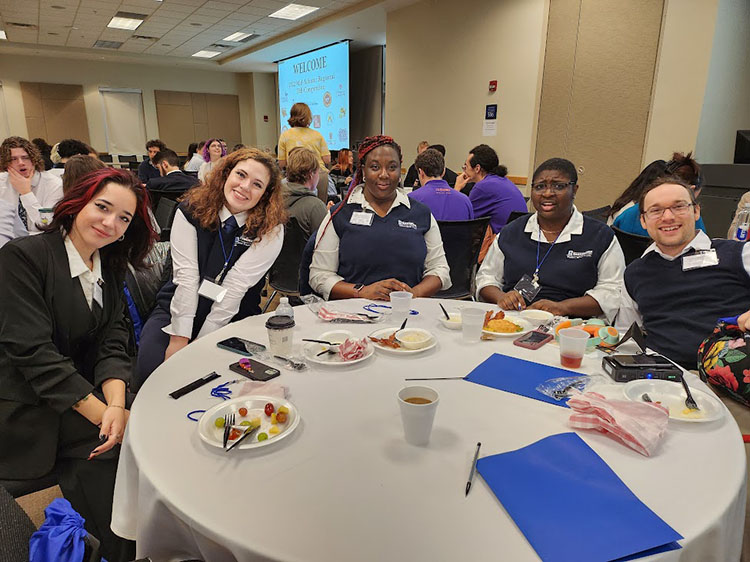
Foundation in Ethics
A matching grant from the Hoffberger Foundation and National Endowment for the Humanities creates the Hoffberger Center for Ethical Engagement to sponsor faculty research, student internships and public programs in business and professional ethics. For about 15 years, the center has sponsored the Mid-Atlantic Regional High School Ethics Bowl. It also has fielded teams for national competitions. In 2023, the UBalt Ethics Bowl team participated in the Intercollegiate Ethics Bowl National Competition.
"The Hoffberger Foundation had the opinion that if students were being forewarned about ethical problems they might encounter in the workplace, they would also be forearmed in how best to deal with difficult situations that might arise," Fred Guy, then-associate professor and center director, told UBalt Magazine in 2013 on the 25th anniversary of the center.
1988
In Maryland Partnership
The University of Maryland System is established, merging five University of Maryland institutions and six members of the State University and College System of Maryland. UBalt joined the Board of Trustees of the State Colleges System as an upper-division institution in 1975.
1989
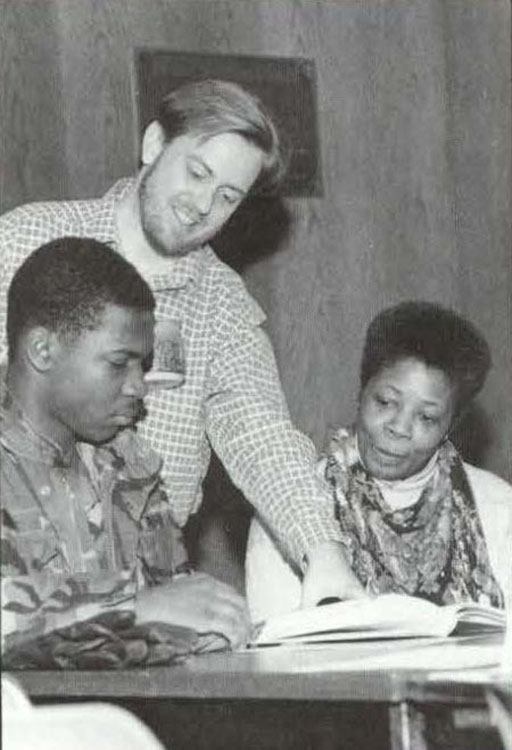
Building Enrichment
The University partners with the National Association for the Advancement of Colored People as an enrichment center for the Academic, Cultural, Technological and Scientific Olympics (ACT-SO). The program was created to encourage academic and cultural achievement among Black high school students. At the U of B Enrichment Center, faculty offered coaching in two of the categories: original essay and playwriting. Every other Saturday from January through March, small groups of students worked with faculty on their ACT-SO entries. The weeks spent developing and polishing their writing paid off: at the Baltimore ACT-SO competition held in April, five students received awards.
1990
New publication hits stands
In April, the University debuts Passager, a publication featuring the reflections of writers and poets "exploring aging as an empowering experience." The editors are English and communications design faculty members Kendra Kopelke (editor-in-chief) and Sally Damowsky, as well as students.
1990
Calling For Change
In October, the Lesbian and Gay Law Students Association LGLSA) holds a small protest on campus against on-campus recruiting by organizations that discriminated based on sexual orientation, with a particular focus on the U.S. military. A sign reads, UB Law should discriminate against employers who discriminate." Another reads, "On-campus recruiting should not be open to employers who discriminate. Force career placement to update its non-discrimination policy."
1994
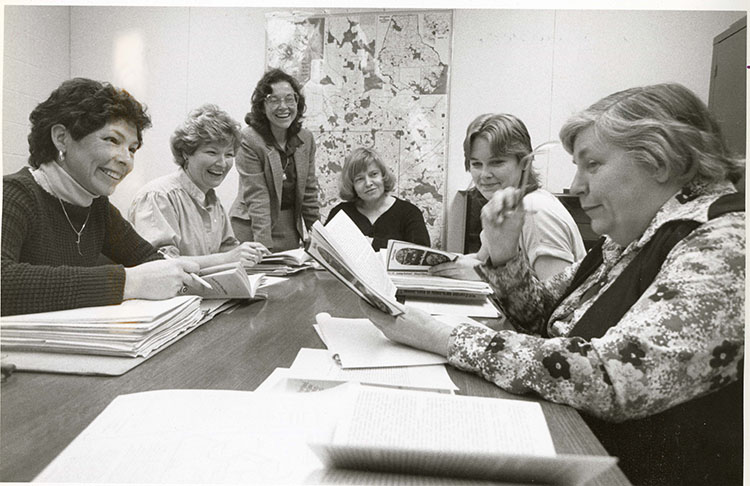
A Matter of Honors
Helen P. Denit University Honors Program begins, expanding a program previously established but limited to only Yale Gordon College of Liberal Arts students to all undergraduate students. Denit was a former teacher and Montgomery County civic leader. She served on the Woman's Board of Montgomery General Hospital as well as numerous other civic, patriotic and charitable organizations. Under the provisions of her will, she created the Helen Pumphrey Denit Trust for Charitable and Educational Purposes. Since her death in 1988, the trustees have assisted numerous nonprofit organizations with one-time and multi-year grants. In particular, the trustees have supported the honors program.
1994
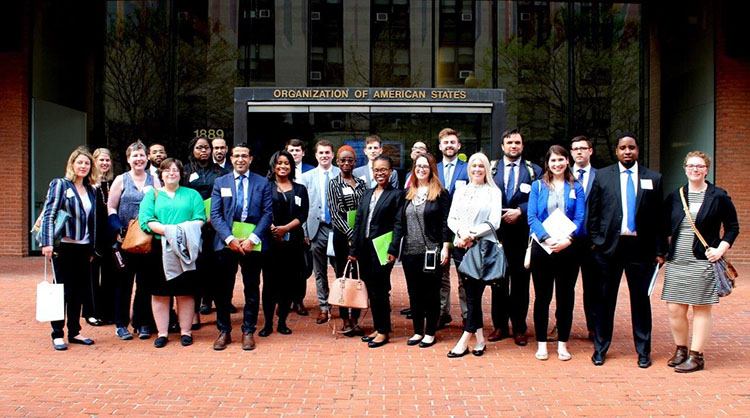
Excitement over International Law
The Center for International and Comparative Law is established in October to promote the study and understanding of international and comparative law, and of the political and economic institutions that support the international legal order.
The center sponsors research, publication, teaching and events about international legal issues, with special emphasis on human rights, women's human rights, international courts and tribunals, democracy, intellectual property and international business transactions.
1995
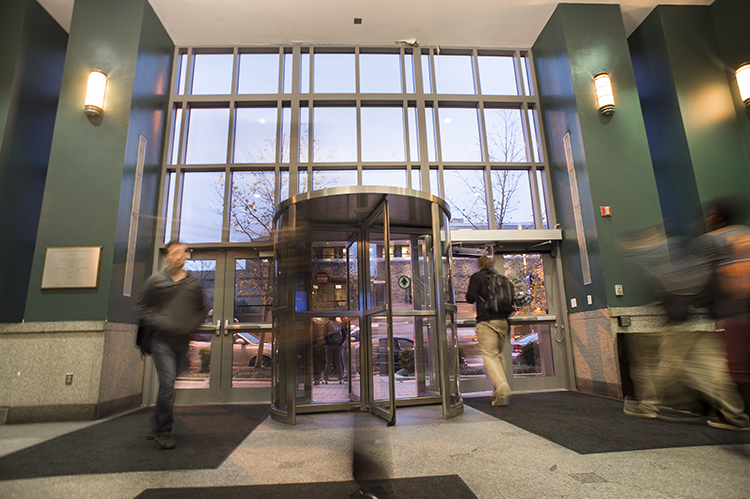
A Growing Campus
The campus community gathers on April 5 to celebrate the opening of the Merrick School Business Center on Mt. Royal Avenue at Charles Street. The building is dedicated Dec. 13 on the same year and named after alumnus William H. Thumel Sr., the following fall.
1997
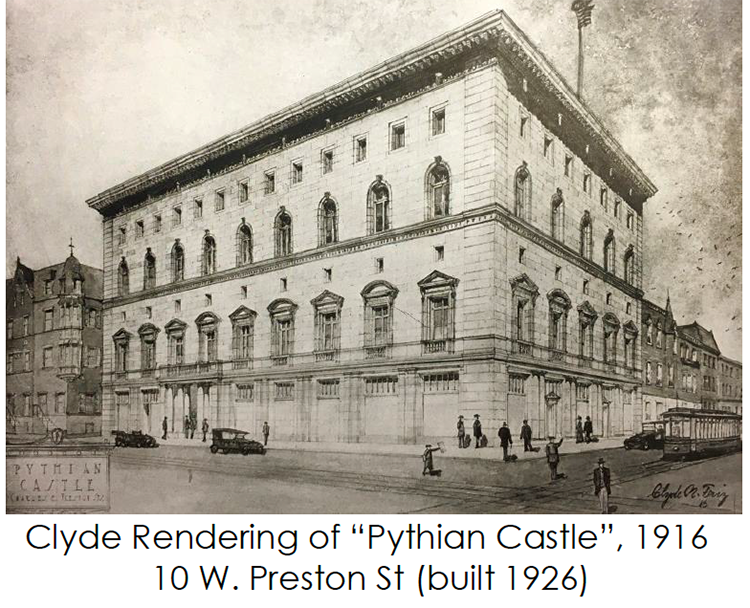
Building history
The University acquires the Crestar Bank building, the former headquarters of Loyola Federal Savings and Loan, at the corner of Charles and Preston, expanding the campus to Preston Street. The building was first constructed in 1926. It once held an auditorium for 700, was the home of the Club Charles nightclub and housed two different banks. Law alum and late Orioles owner Peter G. Angelos bought the building in the late 1990s until the University secured the funds from the state needed to purchase the building.
1998
New Faces
For the first time since 1975, sophomores are back on the roster. The University earned approval from the Maryland Higher Education Commission in early 1998 to make this moment possible. Enrollment started in the fall semester with 22 sophomores.
1999
First-Mover Advantage
Merrick School of Business establishes the first AACSB-accredited online MBA in January. The University started going digital in partnership with the University of Maryland's Interactive Video Network IVN) in 1994. By spring 1995, the University was offering four courses via IVN at six different sites throughout the state, including other USM institutions.
2000
Finding Our Fit
The Career and Internship Center presents its first "Dress for Success" workshop for students, which included a presentation on professional attire, a fashion show and personalized critique. The center launched a pop-up Career Closet in 2018, providing students with an accessible and free way to dress for success.
2000
Is the Doctorate In?
The University gives Maryland its first Doctor of Public Administration program. The program gave students another option beyond the well-established Master of Public Administration, which launched 25 years earlier.
2000
Data for Public Good
Baltimore Neighborhood Indicators Alliance-Jacob France Institute begins after a two-year planning process where several citywide nonprofit organizations, city government agencies, neighborhoods, and foundations were gathered by the Association of Baltimore Area Grantmakers and the Annie E. Casey Foundation.
Two years later, it would publish the first Vital Signs, a series of data reports that take the pulse of Baltimore's communities and explores neighborhood-level trends across various topic areas.
2000
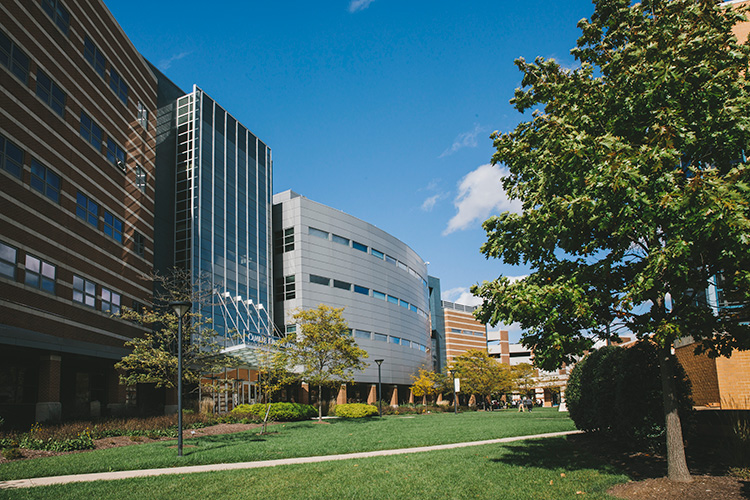
Building Beyond Baltimore
The Universities at Shady Grove opens in Rockville, Maryland as a partnership across nine University System of Maryland institutions. UBalt can extend some of its programs to attract more students that live and work closer to the Montgomery County campus while offering the same degrees, access to professors, and support services. Today, UBalt offers five programs at the Shady Grove campus: B.S. in Health Management, B.S. in Simulation and Game Design, M.A. in Integrated Design, M.S. in Health Administration and the Doctor of Public Administration (DPA).
2001-2025: A Season of change

2003
Committing to Service
In May, UBalt hosts its first Community Service Day, turning students, faculty, staff and alumni into volunteers poised to serve the city. A year later, the Center for Student Engagement and Inclusion commits to making the event an annual tradition.
2003
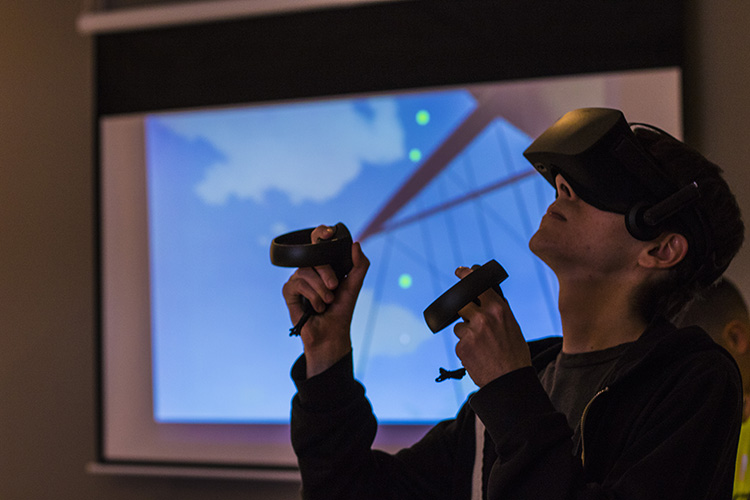
It's Game Time!
The University adds Simulation and Game Design as a unique major option for undergraduate students. It is the oldest and largest program of its kind in the state. Today, students can join the program at two campuses—Baltimore and The Universities at Shady Grove.
2005
Broadening the Creative Community
The University establishes an MFA in Creative Writing & Publishing Arts program that's unique from most largely because students not only learn how to hone their writing across mediums, but also get to draft, design and publish their own book.
2006
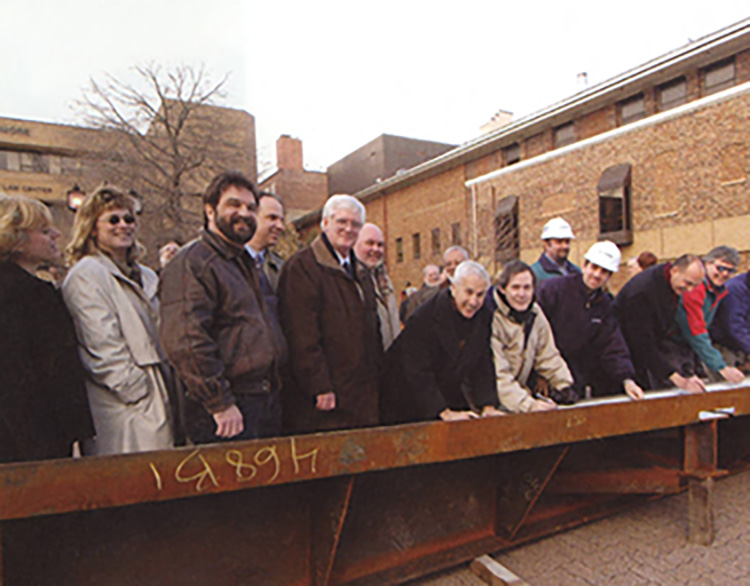
A Space for Students
The University celebrates the dedication of its new Student Center on April 17. This 38,000 square foot, five-story hub for student activity includes The Hive campus store, game rooms, study and meeting spaces, student organization offices, and a theater. Later this year, the building ranks in the top 5 best built in the city in a decade by Baltimore Magazine.
2007
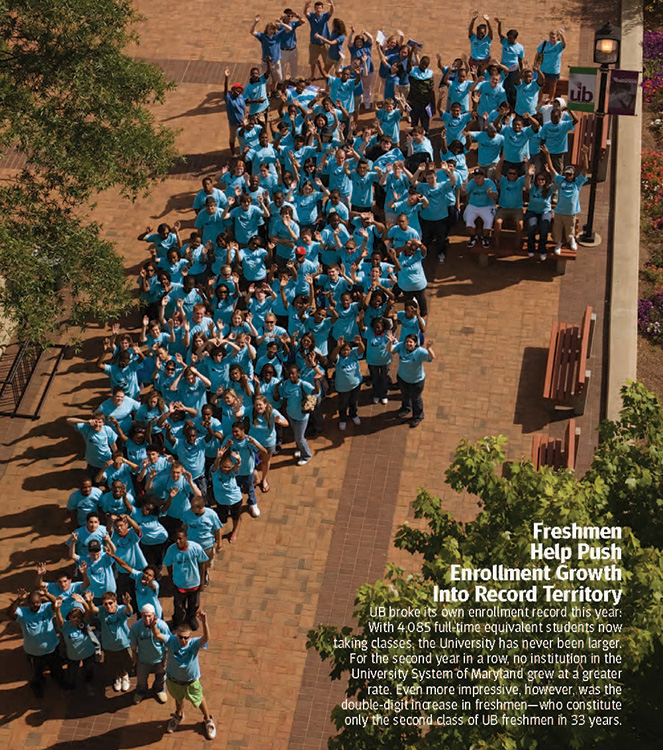
Fresh Faces
The University admits its first class of first-year students for the first time since 1974—150 in all. The seeds of this effort were planted in fall 2004, when the University System of Maryland Board of Regents issued a report about the increasing demands on higher education because of the blossoming "baby boom echo" generation. In February 2006, the Maryland Higher Education Commission approved the University's revised mission statement.
In fall 2008, UB breaks its own enrollment record with 4,085 full-time equivalent students, including a 14 percent increase in the freshmen class.
2008
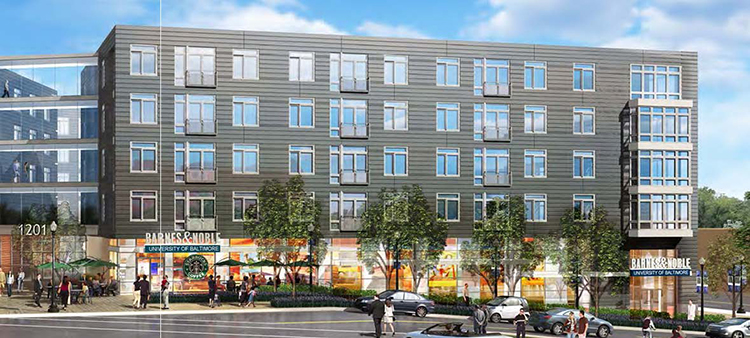
Breaking New Ground
In October, University administrators and city officials break ground on the Fitzgerald at UB Midtown. It was originally designed for housing anchored by retail, including a Barnes & Noble College Booksellers Superstore.
2008
One Particular Saturday
The Baltimore '68: Riots and Rebirth academic initiative launches to recognize the 40th anniversary of the riots that followed MLK's assassination. Included an original play called One Particular Saturday, written by Kimberly Lynne, theater events coordinator, and featuring students from the Baltimore School for the Arts, Baltimore City College and UB. Also featured a "sacred space" for remembering by an artist in residence and a screening of Pip & Zastrow, a documentary about two friends (including alum Roger W. Moyer, B.S. '60) who worked together to prevent rioting in Annapolis.
2010
Cornerstone College
The University takes a massive step forward by creating the College of Public Affairs, Maryland's only college dedicated to public service, with programs serving health care, criminal justice, human services and public policy and international affairs, as well as three leading policy centers. Since its inception, the college is consistently ranked among the best public affairs schools in the nation by U.S. News and World Report.
2010
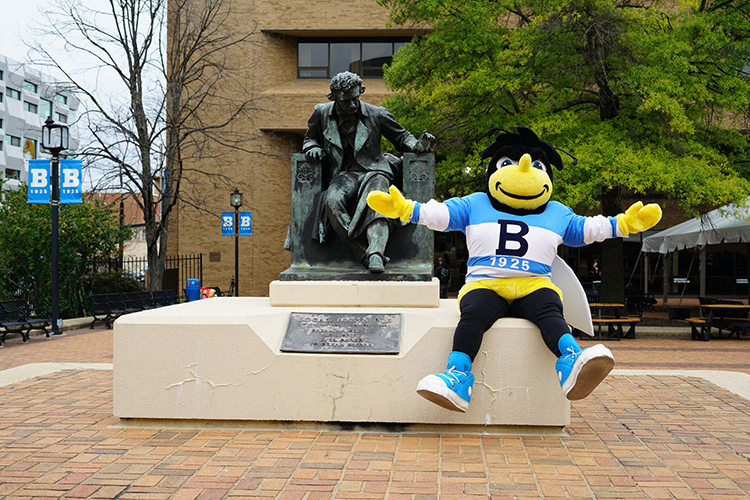
Big Buzz on Campus
Eubie, the University of Baltimore's official mascot, makes his debut at the spring block party on April 22. The bee has long been part of the University's culture, but this event ushered in a new bee for a new era. He even finally got a name: Our students voted to call him Eubie.
2010
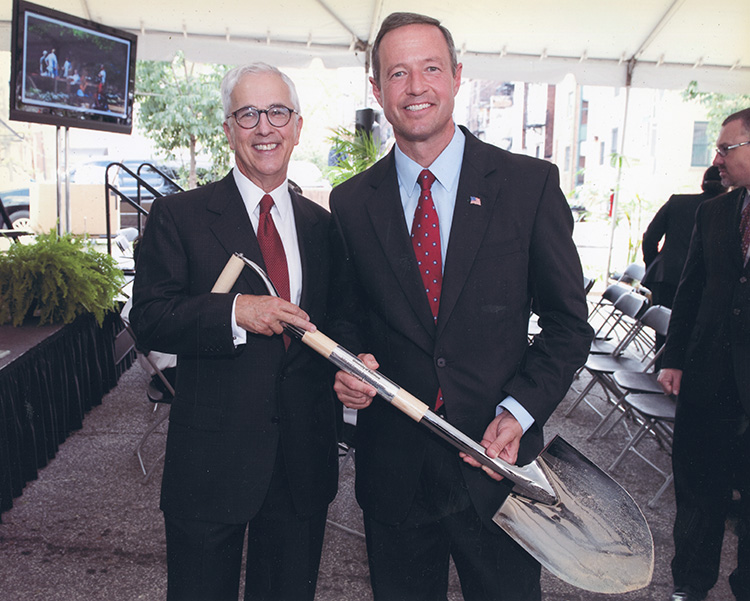
Breaking Greener Ground
Community members and local dignitaries, including then-Maryland Gov. Martin O'Malley, break ground on a long-anticipated new John and Frances Angelos Law Center on Aug. 26. The center officially opened three years later. This 12-story facility, at the northeast corner of North Charles Street and West Mt. Royal Avenue, houses the law school's clinics, centers and classrooms. The building was designated LEED Platinum by the U.S. Green Building Council.
2013
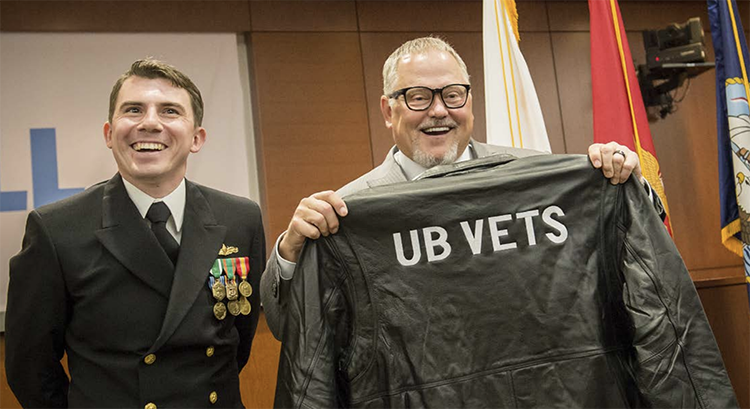
Serving Those Who Served
The Bob Parsons Veteran Center holds its grand opening on Nov. 11, Veterans Day. The celebration included Bob Parsons, B.S. '75, D.H.L. '08, founder of several globally successful companies, a billionaire philanthropist, and author, who helped establish the veterans center through The Bob & Renee Parsons Foundation. It serves as a hub of resources and support in a military-friendly atmosphere. Veteran and military-affiliated students can also access a private computer lab, conference room, lounge and kitchenette.
The Parsons Foundation also establishes The Bob Parsons Veterans Advocacy Clinic, which helps student attorneys to provide counsel related to veterans' legal concerns.
2014
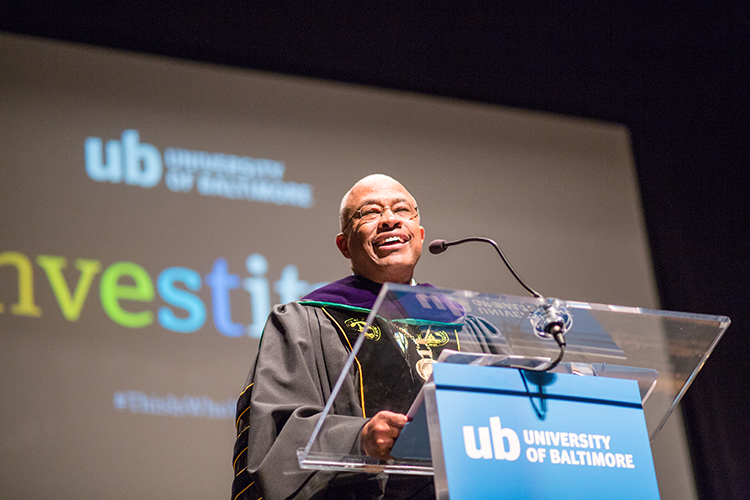
Unprecedented President
On May 14, the University System of Maryland announces Kurt Schmoke as the University's next president. Schmoke, 64, addresses the University community the day of the announcement: "The thing that attracted me [to UBalt] so much—not only my love for the city, the state—[but] looking at the plans, the proposals, the strategic plan, all the ideas that have been brought together about the future of the University, it just seemed to me that this University has great dreams for the future. And it's up to all of us [who] will be in leadership capacities to make sure that we fulfill those dreams."
The following April, the community celebrates Schmoke's investiture, a traditional ceremony that marked the start of his tenure as the eighth president of the University.
2015
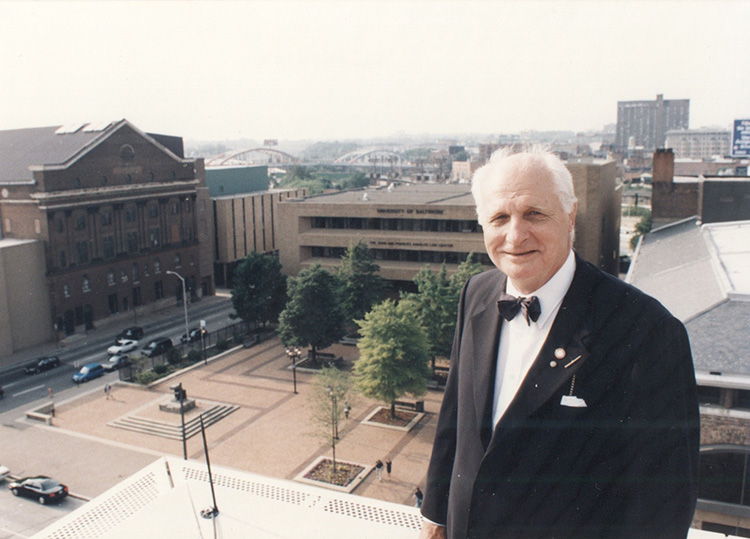
Turner's Commons
In a surprise June 10 ceremony, the University community gathers to announce the new name of the Learning Commons after H. Mebane Turner. Turner, a long-time president, now emeritus, had not known about the honor in advance. Kurt Schmoke and the University of Baltimore Foundation Board of Directors collaborated on the effort.
"This is wonderful," a misty-eyed Turner says at the event. "It's a great privilege to have been associated with this institution for so long. … I think this place is just getting started, and you're the crowd to get it there."
2016
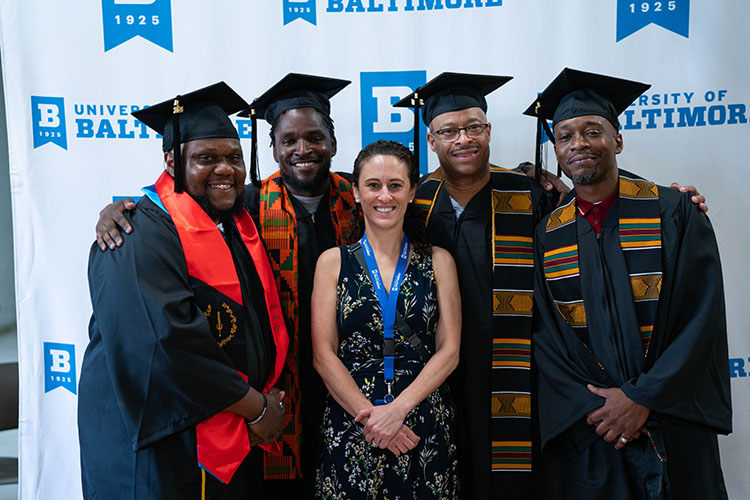
Creating Second Chances
On June 26, UBalt is selected to participate in the U.S. Department of Education's Second Chance Pell Grant Experimental Sites Initiative. UBalt was among 67 other colleges/universities selected nationwide to offer a post-secondary correctional education program through federal Pell Grant funding. The objective is to provide post-secondary education to incarcerated students prior to release, therefore reducing likelihood of recidivism, and improving outcomes for educational and employment success. In December 2021, James Ruffin III becomes the program's first graduate. The alumni count has since grown to 13.
2016
Meeting Students' Needs
A Campus Pantry opens in October, two years after a student, Elizabeth Paige, brought the idea to the Student Government Association. The pantry provides critical food assistance and resources, toiletries, and now includes a Baby Bee Corner for parents—all available free of charge to anyone with a Bee Card. The pantry finds support and donations from campus and community partners.
2018
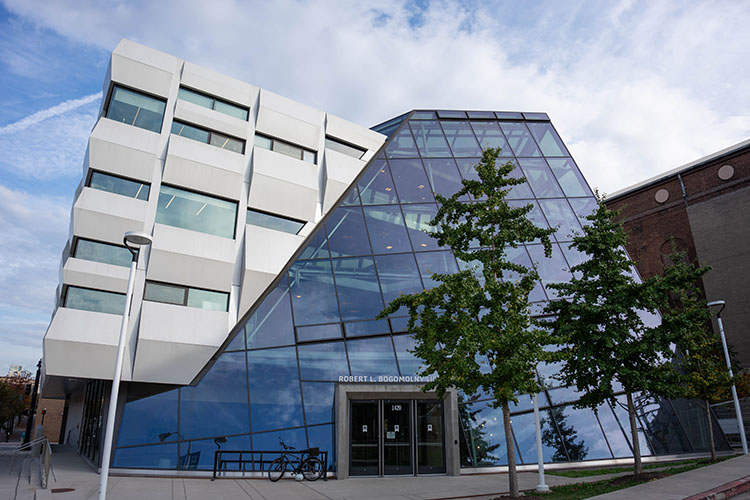
Modern Library Opens New Chapter
A newly renovated Robert L. Bogomolny Library opens at the corner of Maryland Avenue and Oliver Street. Beginning in 2014, the Abell Foundation sponsored a design competition where six architectural firms competed for the chance to redesign and renovate the then Langsdale Library. The original structure dates to 1965. Behnisch Architekten of Boston was selected as the competition's winner.
The renovation work started in fall 2016. The 55,337 square-foot renovated building, named for the former president, includes several study and meeting spaces, a lounge area, computer stations, a game lab, academic success services, and books, periodicals and DVDs.
2019
Pitching for Change
The Merrick School of Business launches Pitch for $1 Million, a 10-week mentoring program and competition for aspiring UBalt student and alumni entrepreneurs who are interested in addressing critical development needs within Baltimore's middle-market neighborhoods. The inaugural class includes eight Real Estate Fellows.
2019
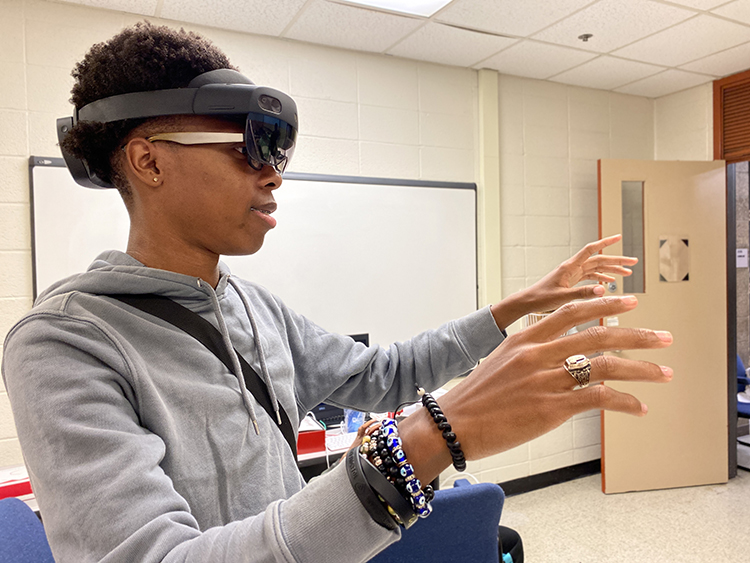
A New Designation
UBalt is recognized as a Predominantly Black Institution, or PBI, by the U.S. Department of Education. This designation provides a pathway for UBalt to qualify for competitive grants in several student-facing areas that will support undergraduate programs in science, technology, health education and related areas of teaching and learning.
One of the first grant-funded opportunities is a 2022 Space Tech Camp, which gave 19 city high school students an introduction to design thinking and augmented reality.
2019
Reaching For Infinity
A team of students from the University of Baltimore is invited to travel to NASA's Johnson Space Center in Houston, Texas, to test heads-up display prototypes they designed within an augmented reality environment to enhance task communication during spacewalks as part of NASA S.U.I.T.S.
2020
A Historic Gift
In February, The Bob & Renee Parsons Foundation dedicated $5 million to establish a scholarship fund to help Pell Grant-eligible transfer and military/veteran students finish their bachelor's degree for free.
The Bob Parsons Scholarship Fund is the single largest donation to a scholarship program in the history of The University of Baltimore. Parsons is a Baltimore native, UBalt alumnus and Marine Corps Vietnam War veteran.
2020
Built For This
In March, the COVID-19 pandemic forces campuses across the globe to close and shift fully to online instruction. The University guides students through the unprecedented moment in its history by leaning into its existing strengths in online learning and innovating where learning couldn't easily transition to a virtual classroom. Professors create curriculum that include virtual escape rooms, video tours and take-home science lab kits.
2021
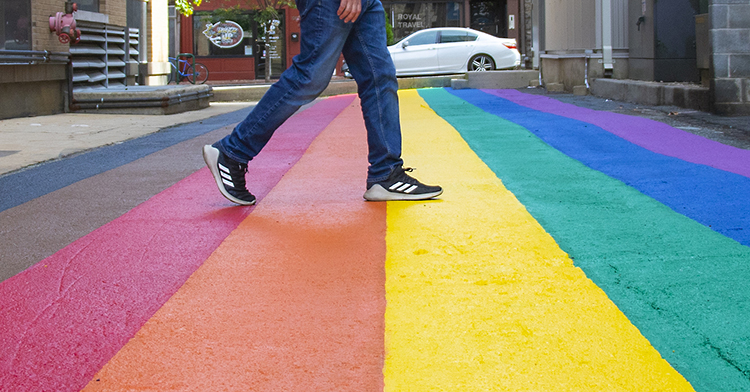
Morton Alley's Makeover
On National Coming Out Day, Oct. 11, the Student Government Association cuts the ribbon on Inclusion Alley. The students re-imagined the quiet alley sandwiched between the Business Center and Liberal Arts and Policy Building to create a welcoming space for the community to spend time. Designed by local community artist Sara Golden, a depiction of the Philadelphia Pride Flag mural runs the length of the alley, hiding asphalt with vibrant colors. More visuals and symbols of inclusion, including a Black Lives Matter mural, tables and planters have all been added to the space over time.
In 2023, Inclusion Alley is named "Best Exhibit" in Baltimore Magazine's Best of Baltimore Readers' Poll.
2022
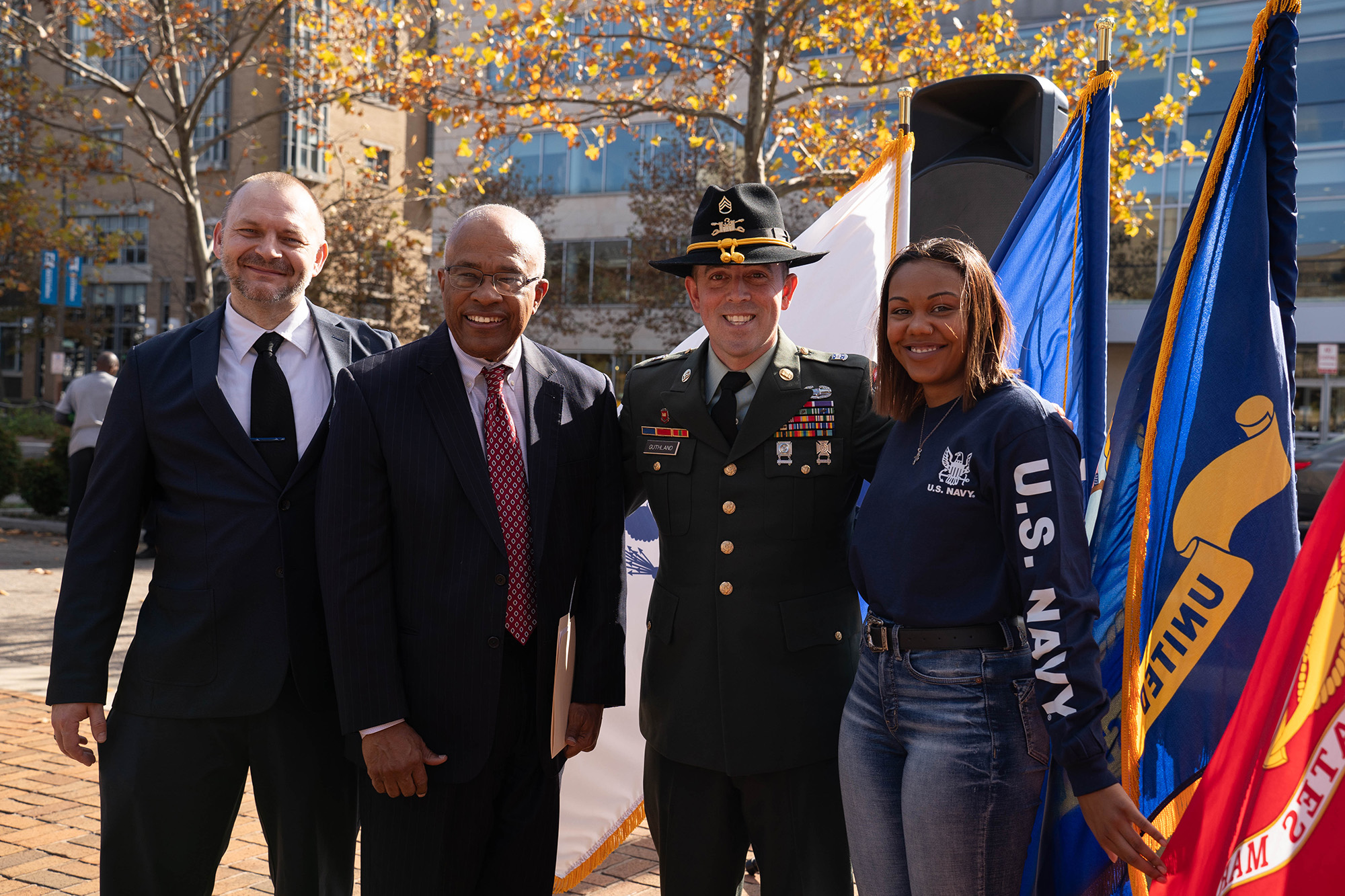
Gold Star Status
The University receives the Military Friendly Gold School designation—an assessment based on a survey of student retention, graduation, job placement, loan repayment, persistence (degree advancement or transfer), and loan default rates for all students, and, specifically, for student veterans. In 2023, it again earns the designation.
2023
Opening the Gateway
With the selection of a developer, the University takes steps toward a long-anticipated reconstruction effort on the northern side of campus. In place of a former postal service site across from Robert L.Bogomolny Library, Zahlco intends to build a 30,000 square foot structure that will include retail and living spaces. A second planned structure will include more residential space and a parking garage.
2023
Advancing Prevention Efforts
In the face of ongoing challenges to the mental health and well-being of communities across the country—including widely recognized mental health crises and the ever changing nature of drug threats to communities—The University of Baltimore establishes in October the Center for Advancing Prevention Excellence (CAPE), a new resource for services and support that will make prevention a top priority in addressing these issues alongside experts in the field, community leaders, policymakers and advocates.
2024
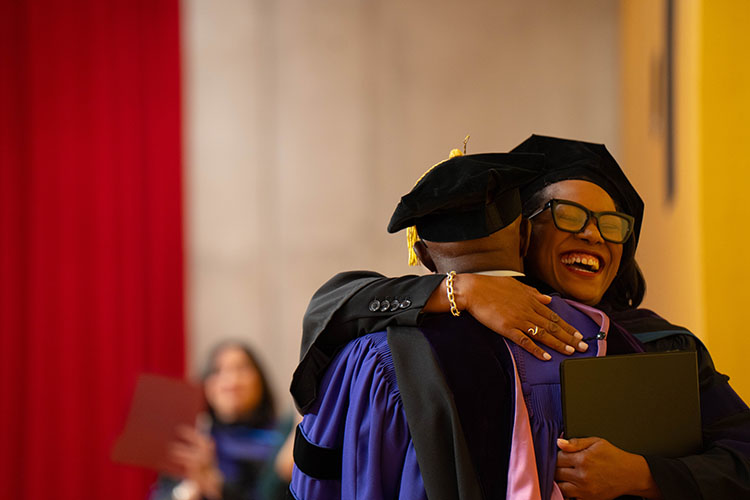
Law Dean's Historic Start
LaVonda Reed is named dean of the UBalt School of Law, becoming the first female dean in the school's 100-year history. Reed comes to Baltimore Law with experience as a dean at Georgia State University College of Law, and as an associate provost and professor at Syracuse University.
2024
Business of the Future
The Merrick School of Business launches its M.S. in Artificial Intelligence for Business, a STEM-designated program and the first of its kind in the state of Maryland. The program aims to build careers of managers in all fields, so they clearly understand AI's capabilities and limitations of the technology such as bias in algorithms or how to examine data to create accurate results.
2024
Room for Change
The University opens a Welcome Center on the southwest corner of Mt. Royal and Maryland avenues. This center is a shared space where enrollment management, advancement and more can centralize public-facing operations and set the stage for the replacement of the Academic Center.

